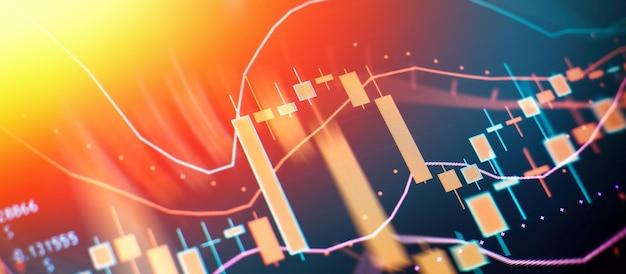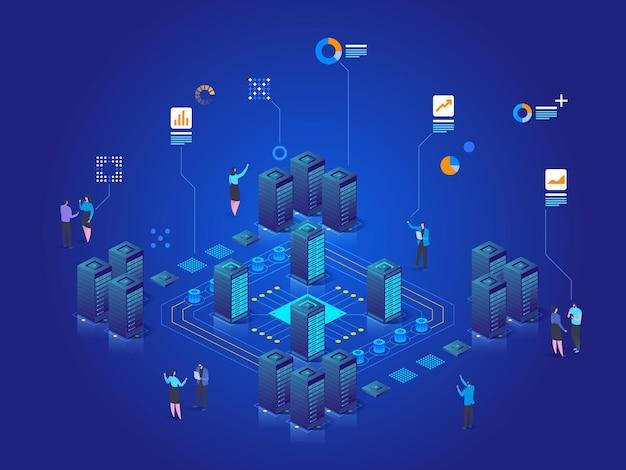Bank fraud is a global and widespread issue, costing the banking industry billions of dollars annually. Fraudsters use advanced techniques, making it imperative for financial institutions to incorporate efficient fraud prevention measures. Fortunately, with advancements in technology, banks can now rely on data analytics to detect fraudulent activities effectively.
In this comprehensive blog post, we’ll explore how banks are using data analytics to detect fraud, the benefits of leveraging data science in fraud detection, and real-life case studies of successful fraud detection. We’ll delve into the different analytics techniques used in fraud detection, including machine learning, predictive modeling, and data mining.
Moreover, we’ll answer some critical questions like how data analytics is applied in banking, and the specific type of analytics used to detect fraudulent activities. We’ll also explore how fraud analytics has evolved over the years and how the use of data analytics has become a crucial component in fraud detection.
In conclusion, fraud detection using data analytics in the banking industry illustrates the importance of being proactive in the fight against financial fraud. At the end of this post, you’ll gain a deeper understanding of how data analytics can be leveraged for the effective detection of fraud in banks. So, let’s dive in!
Fraud Detection using Data Analytics in the Banking Industry
In the banking industry, fraud detection is a crucial aspect of keeping customers and their money safe. With the rise of technological advancements, fraudsters are also adapting to more sophisticated methods to carry out their activities. However, the use of data analytics has helped banks to identify and prevent fraud in real-time.
Analyzing Behavioural Patterns
Data analytics can be used to monitor the behaviour of customers. It is a useful tool to detect unusual or suspicious transaction patterns that may indicate fraudulent activities. Banks can leverage machine learning algorithms to learn from historical customer data and identify patterns that could signify fraudulent behaviour. This strategy ensures that fraud detection is proactive, and potential threats are identified before they cause extensive damages.
Identifying Network Anomalies
Data analytics tools can help banks identify network anomalies that suggest unauthorized access by fraudsters. These tools can monitor network activities, detect unusual data traffic, and identify suspicious activity that might indicate a security breach or account takeover. This method can help banks detect scams such as phishing scams and protect their customers’ personal information.
Enhancing Regulatory Compliance
Compliance is an essential component of the banking industry. However, complying with regulatory standards can be challenging, especially as fraudsters continually devise new methods to perpetrate fraud. Data analytics can help banks to identify the risk of financial crimes by monitoring transactions, such as detecting suspicious international wire transfer. This strategy can help banks reduce the risks of non-compliance.
In conclusion, the banking industry faces new challenges as fraudulent tactics evolve. Fortunately, data analytics tools can help banks stay ahead of potential threats. By analyzing customers’ behavioural patterns and identifying network anomalies, banks can protect their customers and their assets efficiently. Moreover, data analytics tools can be used to enhance regulatory compliance and reduce the risks of non-compliance.
Benefits of Fraud Analytics
Fraud analytics is a data-driven approach that uses statistical models and machine learning algorithms to detect and prevent fraudulent activities in the banking industry. It provides numerous benefits that improve efficiency, reduce costs, and safeguard the financial system. Here are some of the benefits of fraud analytics:
Reduces Financial Losses
Fraud analytics can help organizations detect fraudulent activities in real-time, which can reduce financial losses. The analysis of historical data provides insights into patterns and trends that may indicate fraud, allowing banks to take preventive measures to curb future fraudulent activities. This saves banks from huge losses by reducing the risks of financial crimes.
Improves Customer Trust
Fraudulent activities can affect customer trust in the banking industry. By using fraud analytics to detect and prevent fraudulent activities, banks can enhance their reputation and increase customer confidence in their services. This helps to increase customer satisfaction and retention.
Enhances Operational Efficiency
Fraud analytics automates the process of detecting and preventing fraudulent activities, saving banks time and resources. With automated fraud detection processes in place, banks can focus on their core operations, such as customer service and product innovation, leading to an enhanced operational efficiency.
Provides Predictive Insights
Fraud analytics provides predictive insights and real-time alerts, which helps banks predict and prevent fraudulent activities before they happen. This helps to mitigate risks and save costs, as banks can take preventive measures to forestall losses.
Ensures Regulatory Compliance
With increasing regulations in the finance industry, banks are now required to prevent and detect financial crimes, money laundering, and terrorist financing. Fraud analytics helps banks comply with regulatory requirements by providing real-time fraud detection and prevention services.
In conclusion, fraud analytics is essential in the banking industry, providing numerous benefits such as reducing financial losses, improving customer trust, enhancing operational efficiency, providing predictive insights, and ensuring regulatory compliance. Therefore, banks must invest in fraud analytics to safeguard the financial system and increase customer satisfaction.
Data Science Fraud Detection
Data Science plays a crucial role in fraud detection using data analytics in the banking industry. With the increasing amount of data generated daily, traditional fraud detection methods have become obsolete.
Advanced Analytics Techniques
With data science, organizations can employ advanced analytics techniques like machine learning algorithms and predictive analytics to identify historical fraud patterns. Data science uses various techniques to identify fraudulent activities. These include outlier detection, network analysis, clustering, and classification.
Machine Learning
Machine learning techniques offer the potential to identify fraud patterns in large datasets. It involves the training of algorithms to learn how to identify and flag fraudulent transactions.
Natural Language Processing
Natural Language Processing (NLP) plays an essential role in identifying fraudulent activities by analyzing text data. NLP techniques extract information related to transactional details, fraud trends, and patterns.
Predictive Analytics
Predictive analytics utilize factors such as geographic location, customer behavior, and transaction history to detect potential fraudulent activities. It is an effective tool for predicting and preventing fraud in real-time.
Social Network Analysis
Social Network Analysis (SNA) provides a visual representation of the relationships between different entities within a transaction. It enables the identification of fraudsters operating in a network, long before they commit a crime.
Data science has made it possible to analyze vast amounts of data, enabling organizations to identify fraudulent activities in real-time. Utilizing advanced analytics techniques such as Machine Learning, Natural Language Processing, and Predictive Analytics has made fraud detection a more precise and more efficient process. As the volume of data continues to grow, relying on traditional techniques is no longer practical; data science offers a more viable solution.
Fraud Detection in Banking PDF
As technology rapidly advances, the banking industry has been able to apply data analytics to detect and prevent fraudulent activities. Among the many sources of data are banking PDFs. These documents hold valuable clues that are crucial in identifying potential fraudulent activities. They aid in the prevention of financial crime, providing a comprehensive view of transaction trends that can assist in the discovery of suspicious patterns. Here is a breakdown of how banking PDFs are used in fraud detection.
Transactional history
One of the most potent sources of information in detecting fraud is transactional history, wherein banking PDFs can be analyzed to track the various activities of an account. Through this, analysts can identify patterns that are indicative of fraudulent activities and block any further funding. These patterns can be quickly detected even in large volumes of data, enabling financial institutions to minimize their financial loss.
Analyzing vendor information
Another way of using banking PDFs to detect fraud is by analyzing vendor information. Invoices and payments to vendors can offer a wealth of information that can aid in the identification of criminal activities. Financial institutions can use analytics technology to look for duplicate invoices, identify potential conflicts of interest, and flag any suspicious transactions that may arise.
Identifying suspicious transactions
Banking PDFs can also be used to identify suspicious transactions. Specific markers such as unusual amounts, locations, or times for deposits and withdrawals, can all be detected and investigated through these data analytics tools. This enables banks to discover instances where their systems are being manipulated or abused. By doing so, they can quickly take necessary actions to prevent further fraudulent activities.
In conclusion, the application of data analytics in the banking industry has played a crucial role in fraud detection. Banking PDFs are powerful sources of information that provide insights into fraudulent activities, enabling financial institutions to protect their clients’ finances. By using data analytics tools, these transactions can be analyzed to identify patterns, suspicious vendor activities, and any other malicious activities. With these tools and processes in place, the banking industries can take quick and decisive action to prevent losses and minimize risks.
Fraud Detection Analytics Case Study
One infamous case of fraud in the banking industry is the Wells Fargo scandal, in which the bank created over 2 million fake bank accounts without the knowledge or approval of their customers. To prevent similar incidents and combat fraudulent activities, Wells Fargo employs sophisticated fraud detection analytics tools.
Systematic Data Analysis
To detect and prevent fraud, Wells Fargo collects data from their various branches, including transaction histories, user behavior, and individual account information. The data is then analyzed using advanced machine learning algorithms and statistical models to identify patterns among fraudulent transactions.
Real-time Tracking
Thanks to the real-time tracking of their customers’ accounts, Wells Fargo can immediately detect any suspicious activity. For instance, if a customer never visits one of the bank’s branch locations but suddenly logs into their account from a foreign country, the system flags it as a potentially fraudulent action, and the bank immediately contacts the account holder to verify the transaction’s legitimacy.
Collaboration with Law Enforcement
Wells Fargo collaborates with local and national law enforcement agencies by providing them with information gleaned from their fraud detection analytics systems. By exchanging information, the two parties can stay up to date on the latest fraudulent techniques and better protect their clients.
Wells Fargo’s success in detecting and combating fraudulent activity is a testament to the power of data analytics. By leveraging insights gained through systematic data analysis, real-time tracking, and collaboration with law enforcement agencies, Wells Fargo can safeguard their clients’ accounts and prevent fraud.
How Data Analytics is Used in Banking
Data analytics has become an integral part of the banking industry as it aids financial institutions to understand complex data. The crucial role played by data analytics in banking cannot be overemphasized. The banking industry mines and analyzes data to make informed decisions that are supported by data.
Risk Management
One of the core areas where data analytics is used in banking is risk management. The process of identifying, assessing, and prioritizing risks in the banking industry is crucial for a smooth operation. Data analytics provides banks with models that enable them to predict possible risks, which helps minimize the potential of fraud and other financial crimes.
Customer Insights
The banking industry is an ever-changing environment with customers coming in with diverse needs. Data analytics enables banks to gain insights into their customers’ preferences, which is an essential aspect of customer experience. By analyzing data, banks can offer personalized services and products, which ultimately results in improved customer satisfaction and loyalty.
Fraud Detection
One of the most significant benefits of data analytics in banking is fraud detection. Data analytics helps banks in identifying and preventing fraudulent activities from happening. This involves creating algorithms that detect patterns in customer transactions, which helps pinpoint any abnormal activities.
Predictive Analytics
Predictive analytics is a subset of data analytics that aims to make informed predictions based on historical data. Banks use predictive analysis in credit scoring, enabling them to assess the risk of lending to individuals. They also use predictive analytics in forecasting the market trends, helping banks make informed decisions.
In conclusion, data analytics in banking has transformed the banking industry over the past few years. From risk management to fraud detection, predictive analytics, and customer insights, data analytics has allowed the banking industry to make informed decisions and improve customer experience.
Bank Fraud Detection Using Machine Learning
Banks are some of the most heavily regulated institutions in the world today. It is virtually impossible for them to avoid the ever-growing threat of fraud, as more sophisticated and technologically equipped fraudsters consistently find new ways to commit financial crimes. However, by leveraging machine learning technology, banks can now have access to new and powerful fraud detection tools that can help them prevent and detect financial fraud.
What is Machine Learning
Machine learning is a subset of artificial intelligence that allows computers to learn and adapt based on experience without being explicitly programmed. In the fraud detection context, machine learning algorithms can analyze vast amounts of data to detect patterns and anomalies that are indicative of fraudulent activity.
How Machine Learning Can Help Detect Bank Fraud
By implementing Machine Learning algorithms, banks can detect unusual customer transactions, examine patterns in customer spending history, identify faked ID documents, and analyze social media activity. This technology can also identify errors in payment processing and even detect ATM skimming. With machine learning technology, banks can reduce their response times from weeks to just hours, or even minutes in some cases.
Benefits of Using Machine Learning for Fraud Detection
There are several benefits banks can derive from utilizing machine learning in detecting and preventing fraud. These include:
– Accurate Fraud Detection: Machine learning algorithms can sift through vast amounts of data to differentiate between normal customer behavior and fraudulent activities effectively.
– Reduced False Positives: Fraud detection algorithms have been known to flag legitimate customer activities as fraudulent. However, with machine learning, the algorithms can learn from customer behavior to reduce false positives.
– Reduced Costs: Through the use of machine learning fraud detection technologies, banks can significantly reduce the costs associated with dealing with fraudulent activities, including loss of revenue, IT expenses, legal fees, and chargebacks from customers.
– Real-Time Decision Making: With real-time fraud detection through machine learning, banks can stop fraudsters in their tracks before they do any significant harm.
The Future of Machine Learning in Banking
As the banking industry continues to face increasingly sophisticated fraud threats, it is clear that machine learning will play an essential role in preventing and detecting fraud. As machine learning algorithms become more sophisticated, flexible, and capable of handling larger datasets, they will inevitably become even more effective at detecting and preventing financial fraud. We can expect to see more banks embrace this technology as they seek to stay ahead of the ever-changing threat landscape.
In conclusion, machine learning provides a powerful tool for banks looking to protect their customers from financial fraud. By leveraging this technology, banks can develop a robust and comprehensive fraud detection system that can detect and prevent fraudulent transactions in real-time, reducing the risk of losses and reputational damage. Ultimately, machine learning technology represents a significant step forward in the fight against financial fraud.
What Type of Analytics is Used to Detect Fraud
Fraud detection using data analytics in the banking industry has become an integral part of any financial institution’s operation. Thanks to technological advancements in data analytics, financial institutions can now leverage analytics tools to detect fraudulent activities and mitigate the risks they pose to their organization.
Descriptive Analytics
Descriptive analytics is a type of analytics used to detect fraud. It involves the interpretation of historical data to identify patterns, trends, and anomalies in customer behavior. This type of analytics provides insights into past actions, which helps financial institutions identify fraudulent activities and take appropriate actions.
Predictive Analytics
Predictive analytics is another type of analytics that detects fraud in the banking industry. It involves the use of statistical models, machine learning algorithms, and data mining techniques to identify patterns in data that suggest fraudulent activities. Predictive analytics uses historical data to predict future outcomes and helps financial institutions mitigate potential risks.
Prescriptive Analytics
Prescriptive analytics is an advanced type of analytics that provides recommendations for fraud prevention based on real-time or near-real-time data. It involves the use of artificial intelligence and machine learning algorithms to analyze data in real-time and provide insights into potential fraud threats. Prescriptive analytics is an emergent technology that shows great promise in the fight against fraud in the banking industry.
Network Analytics
Network analytics is another type of analytics that detects fraud in the banking industry. It involves monitoring customer transactions over a network to detect patterns in real-time. Network analytics uses machine learning algorithms to identify patterns that may indicate fraudulent activities in a transaction network.
In Conclusion, data analytics is an essential tool in detecting fraud in the banking industry. Descriptive analytics, predictive analytics, prescriptive analytics, and network analytics are some of the types of analytics that are critical in identifying and preventing fraudulent activities. By leveraging these analytics tools, financial institutions can minimize the risks associated with fraudulent activities and protect their customers’ assets and information.
How Analytics is Applied to Detect Fraud in Banking
As technology advances, banking industry fraudsters are becoming craftier. But thanks to data analytics, banks now have an edge over fraudsters. In this section, we will explore how analytics is applied to detect fraud in the banking industry.
Identifying Patterns and Trends in Data
Analytics tools are used to analyze massive data sets quickly. In identifying patterns and trends, the system can flag relevant data for human review.
Machine Learning Algorithms
Machine learning algorithms are used to detect fraudulent transactions proactively. They complement traditional rules-based fraud detection by analyzing behavior and transaction patterns of individual customers. Using machine learning-based approaches becomes increasingly important because fraudsters consistently evolve their fraud techniques.
Anomaly Detection
Analytics also utilizes anomaly detection models to identify outliers that do not fit the usual profile of a customer or transaction. Anomaly detection provides a way of predicting fraud before it occurs, which can significantly improve real-time fraud detection.
Predictive Analytics Tools
Predictive analytics tools are used to determine the likelihood of fraud before actual financial loss. Predictive analytical models can be created using a vast amount of the banks data and previous fraud data to predict which transactions can be a possible fraud.
The use of analytics in detecting fraudulent activities in the banking industry is a continuous process. It involves detecting abnormal behavioral patterns, using machine learning algorithms, and analyzing anomalies to predict the likelihood of fraud. By leveraging these advanced techniques and tools, banks can proactively fight fraud and provide a safer banking environment for customers.
Fraud Detection Using Data Analytics in the Banking Industry Illustrates that ATMs
ATMs (Automated Teller Machines) have become ubiquitous in our daily lives, providing a convenient way to access our bank accounts and withdraw cash. However, ATMs have also become a target for fraudsters, who use them to steal money from unsuspecting customers. Fortunately, banks are now using data analytics to detect and prevent ATM fraud.
How Fraudsters Exploit ATMs
Fraudsters are becoming increasingly sophisticated in their methods of stealing money from ATMs. They use various means such as skimming, where they install a card reader on the ATM’s card slot to capture customers’ card details, or trapping, where they place a device on the ATM’s cash dispenser to trap the cash that customers withdraw.
How Data Analytics Can Prevent ATM Fraud
Banks are now using data analytics to detect and prevent ATM fraud. By analyzing a vast amount of data, including customers’ transaction history, location, and amount, banks can detect suspicious patterns of activity that might indicate fraud. They can also use biometric technology, such as fingerprint and facial recognition, to verify customers’ identities and prevent unauthorized access to ATMs.
Examples of Banks Using Data Analytics to Prevent ATM Fraud
Wells Fargo, one of the largest banks in the US, has implemented a system that uses data analytics to detect and prevent ATM fraud. The system analyzes a customer’s transaction history to detect any unusual activity and sends an alert to the bank’s fraud detection team if any suspicious activity is detected. In addition, the bank has also implemented biometric technology to verify customers’ identities and prevent unauthorized access to ATMs.
Bank of America has also implemented a system that uses data analytics to detect and prevent ATM fraud. The system analyzes customers’ transaction patterns and uses machine learning algorithms to detect any anomalies that might indicate fraud. The bank also uses biometric technology, such as fingerprint and facial recognition, to verify customers’ identities at ATMs.
In conclusion, fraud detection using data analytics in the banking industry has been a game-changer in preventing ATM fraud. By using advanced technology, banks can detect and prevent fraudulent activity before it causes any damage. As such, customers can feel secure while accessing their funds through ATMs.



